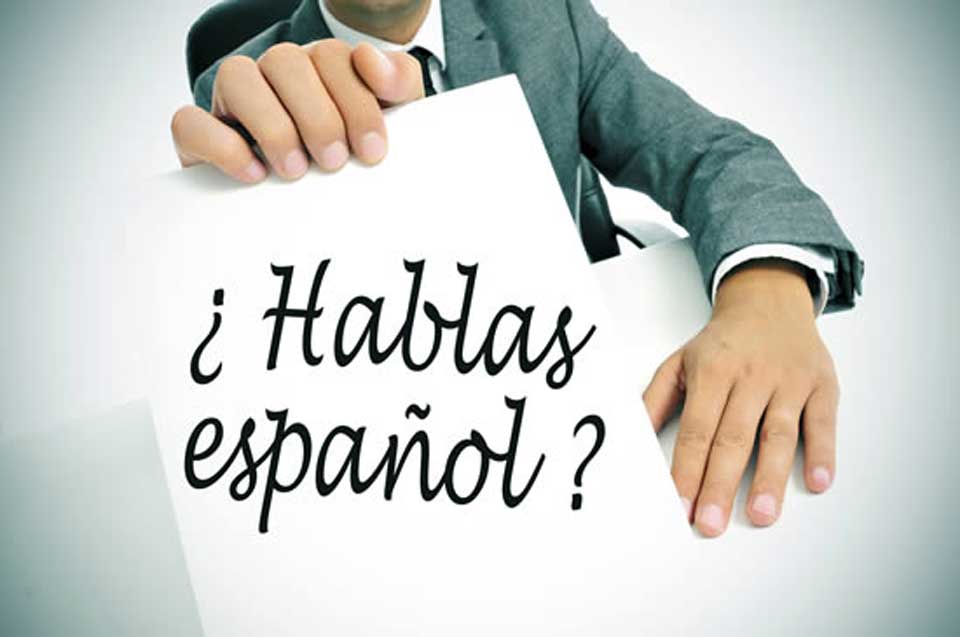
A question that shapes society: How much is that doggie in the window?
Being able to ask for information is an essential skill in any language. Join us as we ask, ‘What’s the burning question?’
Dear reader, I think it’s time we became friends, so I’d like to know a few things about you, so I’ll ask you some questions. Where are you from? Can you speak any other languages? Do you have a job? Who taught you English?
As naturally curious people, we like to ask questions. However, forming questions in English is quite different from how it is in Spanish. If you follow a few simple rules though, you’ll soon be firing off questions with ease.
First, you need to see that there are various basic question forms in English. Let’s see how they work:
Yes / no questions
A yes / no question is simply a question that we can answer with “yes” or “no”. In yes / no questions, the verb goes before the subject:
Are they from Santa Marta? Yes, they are from Santa Marta.
In present simple or past simple questions, the auxiliary verb do / does / did goes before the subject. We use these auxiliary verbs with questions that don’t use the verb be:
Does he dance salsa? Yes, he dances salsa.
Did she learn to make ajiaco? No, she didn’t learn to make ajiaco.
Wh- questions
Question words (like what / where / who / when / why / how) go at the start of a question, and we can use these together with an auxiliary verb or the verb to be:
Where do you live?
When were you born?
What’s your favourite sport?
Use how and what with nouns and adjectives to start questions:
What pets do you have?
What kind of dog is it?
How expensive was it?
How much food does it eat?
Use like in questions to ask about appearance or personality and characteristics:
What does she look like? She’s tall and wears glasses.
What’s that new restaurant like? It’s a bit expensive but the food’s great.
Subject and object questions
It’s important to see the difference between questions where we’re asking about the subject and questions where we’re asking about the object. Look at the following examples and see where the underlined answers are in the sentences, compared with the question words. The first example here is a subject question, and the second one is an object question
Who wrote One Hundred Years of Solitude in 1967?
Gabriel García Márquez wrote One Hundred Years of Solitude in 1967.
Which book did Gabriel García Márquez write in 1967?
Gabriel García Márquez wrote One Hundred Years of Solitude in 1967.
Notice that when we are asking questions about the object, we use an auxiliary like do, and we change the order of the words. When we ask questions about the subject, we do not use this. It’s very important to see how this works because the difference between a subject and object question can change the meaning of questions we’re asking completely:
Who killed Gaitán? Many people think it was Juan Roa Sierra.
Who did Gaitán kill? I don’t think he killed anyone.
Related: More English learning at the Bogotá Post
Advanced topic: indirect questions
It’s usually fine for us to ask normal questions, but there are times when we want to be particularly polite: when we’re asking a stranger for directions, for example. If we just say “Where’s the bank?” then we can’t expect a very friendly reaction. Indirect questions are a very useful way to get information in this sort of situation without being hit by strangers on the street.
To make an indirect question, you need to put this together using three essential elements: a question introduction, a question word, and an affirmative phrase. For example:

This last example is how we make an indirect yes / no question. Instead of using “if”, we can also use “whether”:
Can you tell me whether he bought coffee?
Remember! The last part of an indirect question is an affirmative phrase, and not a question. For this reason, don’t use the auxiliaries do / does or did, and be careful with word order. So:
Incorrect: Do you know if he did arrive today?
Correct: Do you know if he arrived today?
Remember that most of our questions are spoken, so it’s good to remember to use apostrophes and contractions. If you don’t, you’ll sound very formal all the time.
What’s your name?
How’re things at work?
So, how do you feel? Is everything clear? Now it’s time to try the quiz. Just ask yourself one question: do you feel lucky? Well, do ya?
Quiz:
A: Decide if these questions are in the correct or incorrect order. If they are correct, put a tick. If they are wrong, write the correct question.
1. She is from Cúcuta?
2. Where do your parents live?
3. Did learn you a language at school?
B: Write the correct questions for each answer.
1. What _______________________? My car’s red.
2. How _______________________? I’m almost thirty.
3. What _______________________? My brother’s short and fat.
C: Complete the questions about the underlined part of each sentence.
1. Juanes wrote La Camisa Negra.
______________ La Camisa Negra?
2. He was born in Antioquia.
Where _____________________?
3. I bought a hat.
Who ______________________?
4. I bought a hat.
What ______________________?
D. Convert the following direct questions into indirect questions. You can use “do you know” to make the questions.
1. Why does she leave home so early?
2. What time is it?
3. Have they ever been to Neiva?
4. When will your brother be home?
Answers:
A:
1. Is she from Cúcuta?
2. Correct
3. Did you learn a language at school?
B:
1. What colour’s your car?
2. How old are you?
3. What does your brother look like?
C:
1. Who wrote La Camisa Negra?
2. Where was he born?
3. Who bought a hat?
4. What did you buy?
D:
1. Do you know why she leaves home so early?
2. Do you know what time it is?
3. Do you know if / whether they have ever been to Neiva?
4. Do you know when your brother will be home?
Originally from Sheffield, England, Phil Stoneman has been teaching English in Colombia since 2004. Is there anything else to know about him?





